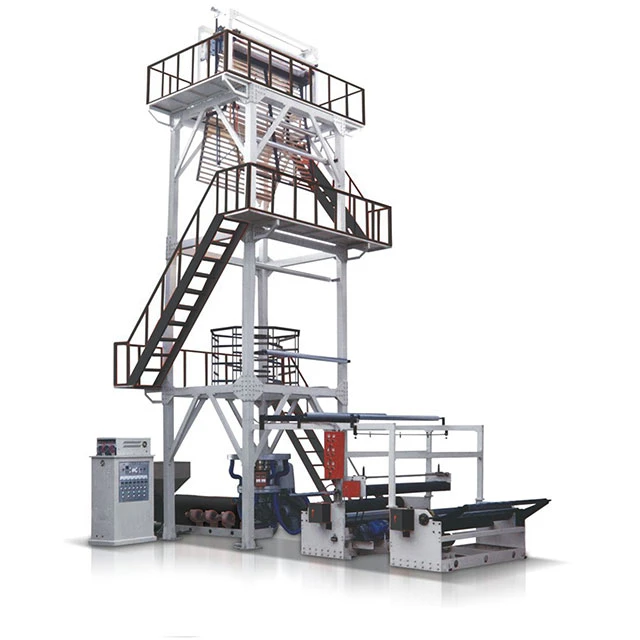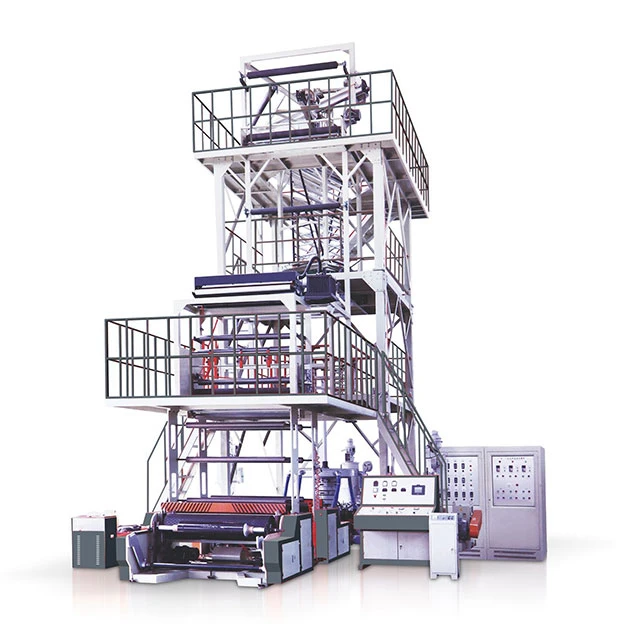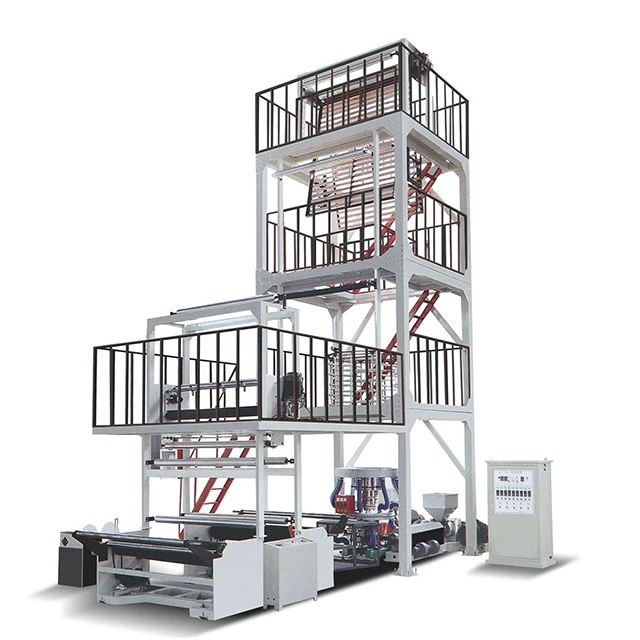Date: 2024.10.30 Click: 76
Blown film extrusion machines are widely used in various industries, including packaging, agriculture, and construction, to manufacture plastic films. The process works by extruding and blowing melted plastic material into thin films. The quality of the film produced impacts not only the product’s functional characteristics and market competitiveness but also production capacity and cost. However, film quality is not determined by a single factor; it results from multiple factors acting together. This study aims to deeply explore how material selection, machine condition and maintenance, process parameter settings, operational skills and experience, and production environment impact the quality of the films produced by blown film extrusion machines.

Material selection is a crucial step in determining film performance throughout the blown film extrusion process. Different resins, such as polyethylene (PE), polypropylene (PP), and polyvinyl chloride (PVC), each possess unique physical and chemical properties that directly influence the film’s transparency, toughness, and thermal stability. If non-blown film-grade materials with unsuitable molecular structure or additives are used, poor plasticization can occur, reducing the film’s stability and uniformity. Additionally, factors like molecular size, impurity concentration, and moisture content significantly impact film quality. Uneven molecular weight distribution may lead to inconsistent film tensile strength, while impurities and moisture can cause defects like bubbles or cracks.

The machine’s operational state and maintenance level directly impact production efficiency and film quality. Proper alignment of critical components, such as the machine head, gusset, and traction wheels, affects the film’s thickness uniformity and stability. Improper equipment setup during the extrusion phase may negatively impact overall quality. Regular cleaning, lubrication, and replacement of worn components are essential for maintaining film quality. Insufficient maintenance may result in unstable output pressure, potentially causing issues like film bubble rupture and further compromising film integrity and uniformity.

Proper setting of process parameters is crucial in the blown film extrusion process. Variations in melt temperature affect the plasticization quality and flow characteristics of the material. If the temperature is too low, incomplete plasticization may result, leading to insufficient film hardness; excessive temperatures may degrade the raw materials, compromising the film’s transparency and toughness. Film stretchability and thickness uniformity depend significantly on blow-up ratio and traction speed settings. Proper blow-up ratio and traction speed ensure even film thickness and stable physical properties. The cooling rate and method also play a key role in solidification efficiency and surface quality. Rapid cooling may destabilize the film bubble, while inadequate cooling may cause a rough or sticky film surface.

Ensuring stable film quality depends largely on accumulated operational skills and experience. Key tasks like parameter adjustments and temperature regulation are guided directly by operators’ skill levels and prior experience. Skilled operators can accurately assess equipment status and adjust production processes accordingly, ensuring consistent film quality. Real-time monitoring and timely adjustments during operation are crucial for maintaining film performance. By continuously observing film status, thickness, and external characteristics during the extrusion process, operators can quickly identify and address issues, preventing quality problems from worsening.

Production conditions and environment play an essential role in determining film quality. Temperature and humidity in the production environment are vital for film formation and solidification. Suitable environmental conditions enable thorough plasticization and stable film hardening. The cleanliness of the production site directly affects the film’s surface quality and appearance. Contaminants like dust or grease on the film’s surface may cause defects or impair transparency. Therefore, maintaining a clean production environment and suitable conditions is fundamental to ensuring film quality.
In conclusion, the performance of blown film extrusion machines in film production is influenced by multiple interrelated factors. To enhance film quality and competitiveness, it is essential to comprehensively consider material type and standards, machine condition and maintenance, process settings, operational skills, and production environment. By continually adjusting and optimizing these elements, we can improve the film’s uniformity, stability, and characteristics, meeting market demands and strengthening the company’s competitive edge. Additionally, as technology advances and manufacturing techniques improve, it is necessary to continue researching and incorporating new factors and solutions to maintain and enhance film quality.

This article draws primarily on practical experience with blown film extrusion machines, relevant literature, and expert industry opinions. We explored how material type and quality affect film quality based on the unique characteristics of resins and the demands of the blown film process. Equipment setup, adjustments, and maintenance practices reflect the specific design and maintenance requirements of blown film extrusion machines. Process parameters are informed by research on optimizing blown film processes and operational experience. Operational skills are summarized based on operator training and practical experience, and production environment considerations are integrated with production site management and cleanliness requirements.
It is important to note that the blown film extrusion process involves numerous factors and steps; the influencing factors discussed here may not be exhaustive. In real-world production, a comprehensive analysis and evaluation must be performed to ensure the film’s stability and consistent quality.
"4mmx2mm Disc Magnet" from S****** received 4 quotation(s)